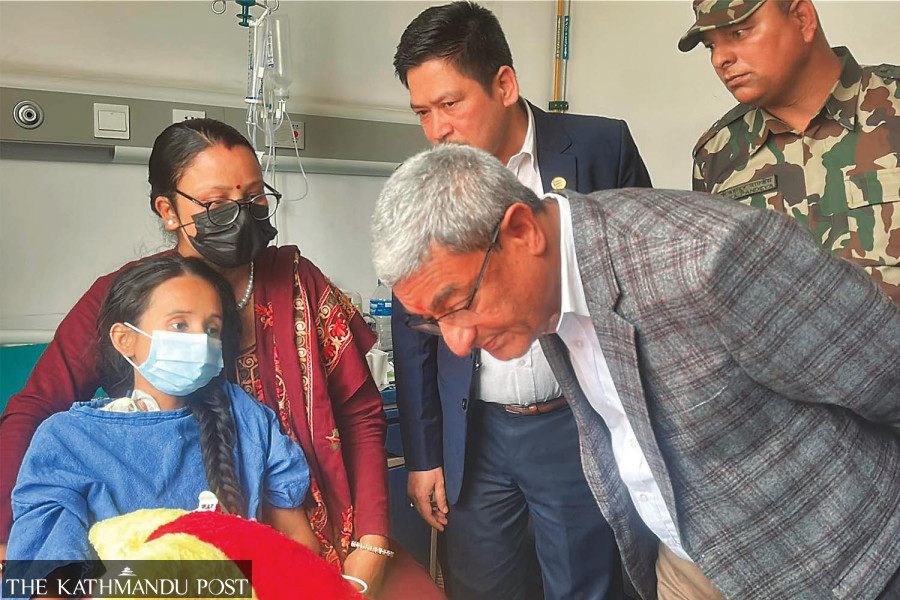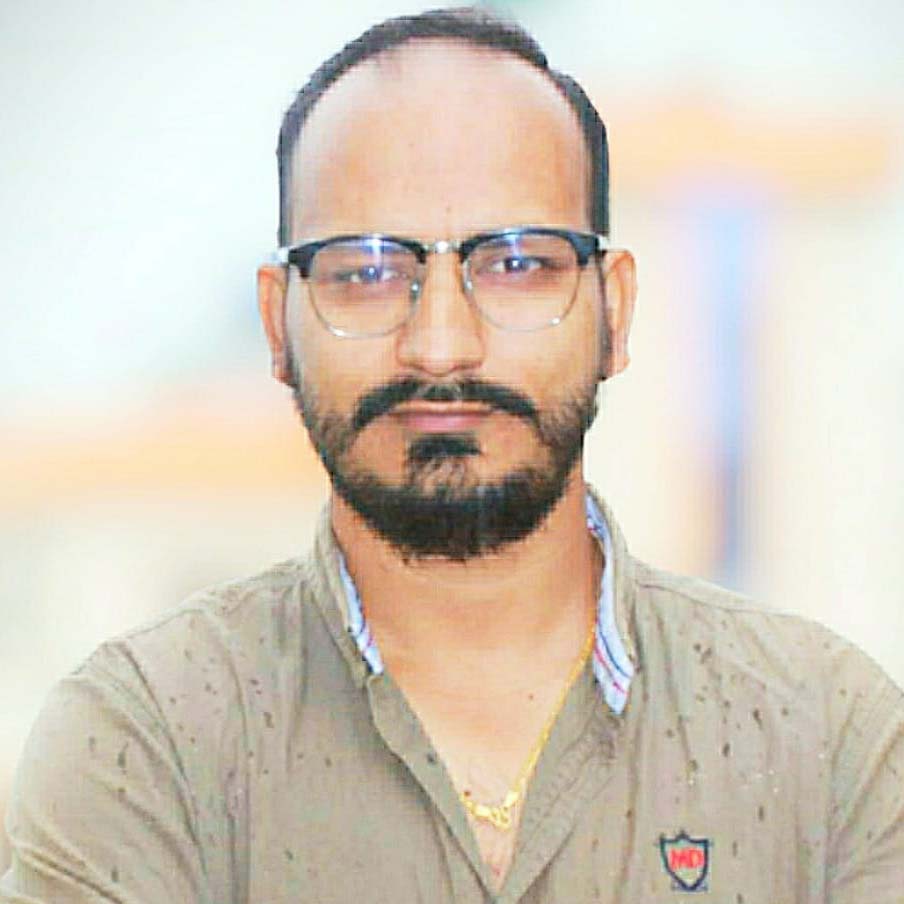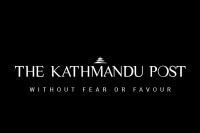National
March 28 protest victims still footing their medical bills
Health ministry says reimbursement process is underway, but victims doubt government is committed to free care.
Purushottam Poudel
The announcement had come early.
At a press conference on April 1, Minister for Communication and Information Technology Prithvi Subba Gurung, who also serves as the government spokesperson, announced that the government had decided to provide free medical treatment to those injured during the violent pro-monarchy protest at Tinkune, Kathmandu on March 28. The decision had been made by an emergency meeting of the Cabinet held on the same day as the protest.
However, when the Post on April 2 visited Kathmandu Medical College (KMC), Sinamangal, where eight protest victims were being treated, several expressed doubts over whether the government would cover the full cost of their treatment.
A week later, when the Post again reached out to these victims, they revealed that the government had made only an announcement and had not followed through. They said they were still paying for treatment, especially for medicines, out of their own pockets.
Ram Chandra Budhathoki, one of the injured in the March 28 protest, is undergoing treatment in bed number 378 in the orthopaedic ward of the KMC Hospital. A permanent resident of Dolakha, Budhathoki supported his family working as a driver and has been residing in Koteshwar, Kathmandu.
Despite the government’s announcement of free treatment, Budhathoki said he has had to pay for all his medications since his admission, after being shot in the hand by police.
“I wasn’t charged for admission or surgery, but my family has been buying all the necessary medication,” he explained. “We were told the government would cover the full cost of treatment, but that hasn’t happened.”
He says his family has spent over Rs65,000 on medicines alone, and total expenses have exceeded Rs100,000.
Budhathoki is not the only one footing the bill. Other victims of the March 28 riots shared similar experiences, saying their families are still bearing the cost of treatment despite the government’s announcement.
Dilli Prasad Luitel, another survivor, echoed Budhathoki. A permanent resident of Bhojpur, Luitel is receiving treatment at the National Trauma Centre, Mahankal, Kathmandu after being shot in the abdomen by police.
“My family has spent over Rs100,000 so far,” said Luitel. “The hospital handles the treatment part, but we must buy all the medicines.”
As complaints mounted that the injured were not receiving free treatment, Home Minister Ramesh Lekhak, on Wednesday, reaffirmed the government’s commitment to covering their medical expenses.
While visiting the injured at Civil Service Hospital at New Baneshwar, Lekhak said, “The decision to provide free treatment to the injured will be implemented.”
Stating that he had come to the hospital specifically to check whether the injured were receiving free treatment, Minister Lekhak added, “The hospital will forward the bills to the Ministry of Health, and the government will reumburse payments.”
He urged all the injured patients and their kin to make sure the bills they have paid are duly verified by the hospital. He reiterated that the government is committed to reimbursing all treatment costs of protest victims.

On March 28, the Cabinet meeting had directed the Ministry of Health and Population to ensure free treatment for those injured. However, many victims appear unaware of this directive, and even those informed remain unclear about the procedures.
The Ministry of Health, however, maintains that the process to provide free treatment has already begun.
“We’ve sent official letters and made phone calls to the relevant hospitals,” said Prakash Budhathoki, ministry spokesperson. “It’s now the hospitals’ responsibility to coordinate from their side. Even if a patient has already been discharged, we will reimburse them if they submit their bills and a police report.”
According to Budhathoki, the hospital verifies the information once a patient provides full incident details—including the date, time, and location. It delivers treatment free of charge, including medication available within the hospital.
“If any medicines needed to be bought from outside due to unavailability at the hospital, patients must submit those bills for reimbursement,” he added. “The hospital then forwards the bills to the ministry, which will either reimburse the patients directly or process the payment through the Cabinet.”
According to the ministry, treatment for the injured continues at the National Trauma Centre (two patients), Civil Service Hospital (one), B&B Hospital (one), and Kathmandu Medical College (one). Of the 129 people injured in the protests, 13 underwent emergency surgery.
The protest organised at Tinkune by the pro-monarchy groups on March 28 turned violent. Video journalist Suresh Rajak, and Sabin Maharjan, a Kirtipur resident, died during the protest and scores of others sustained serious injuries. Protesters resorted to arson, burnt vehicles and houses and vandalised private as well as public buildings.
Meanwhile, the Kathmandu District Court has allowed police to keep Rastriya Prajatantra Party Vice-president Rabindra Mishra and the party’s general secretary, Dhawal Shumsher Rana, along with 20 others, in custody for 15 more days. Mishra and Rana, among others, who were actively involved in the protest, were arrested following the violence.
They are currently being held at the District Police Office in Bhadrakali, Kathmandu.
On Tuesday, Judge Bishnu Prasad Upadhyaya of the Kathmandu District Court granted permission for them to be kept in custody for a further 15 days for investigation.
According to the information provided by the Nepal Police, a total of 173 individuals were arrested during the March 28 protests. Of these, 96 have already been released, while 20 have been charged with sedition and organised crime.
Likewise, 57 individuals have been charged with criminal rioting. Among those accused of sedition are Mishra and Rana, along with 18 others.




 17.29°C Kathmandu
17.29°C Kathmandu















